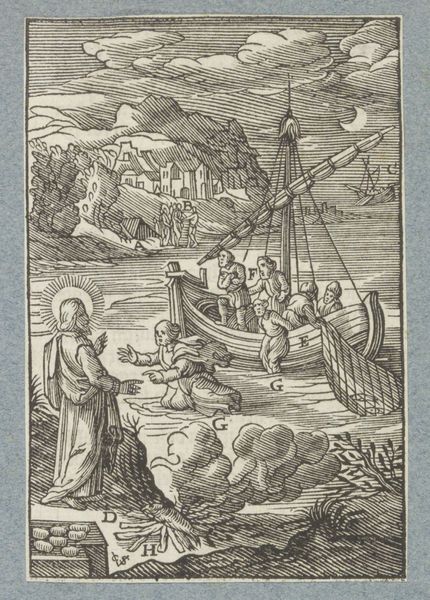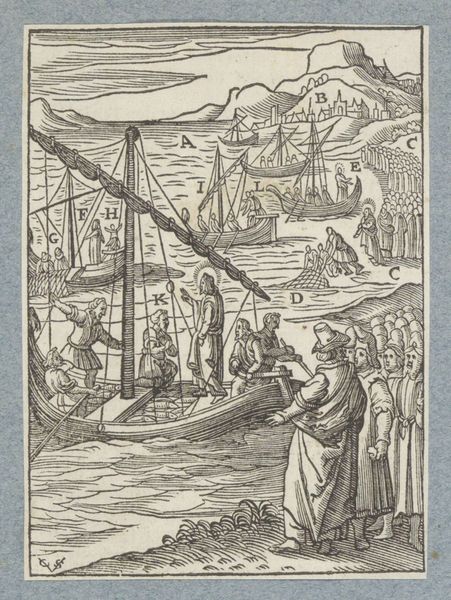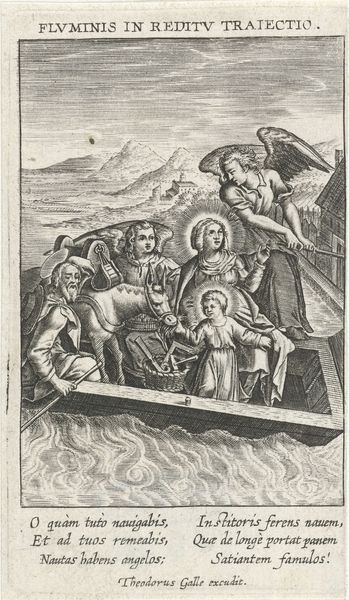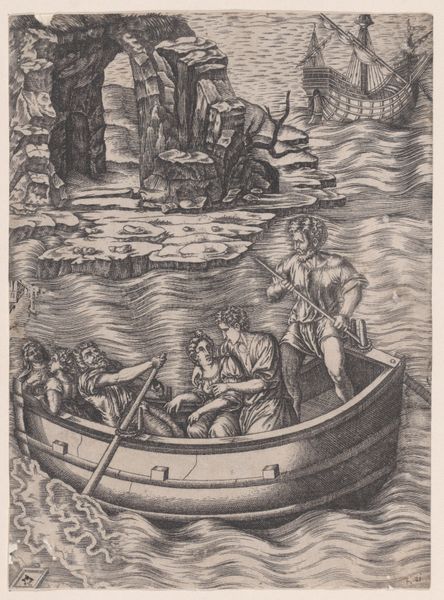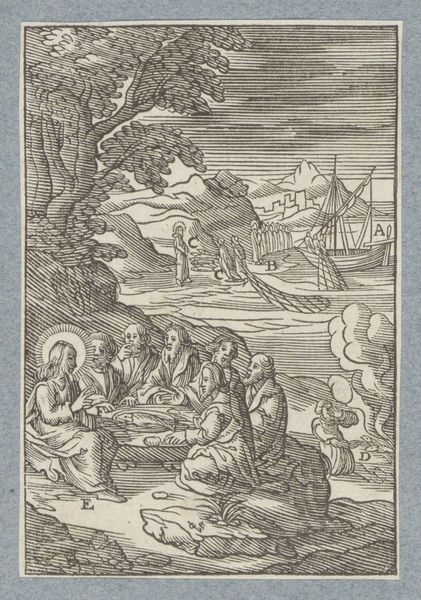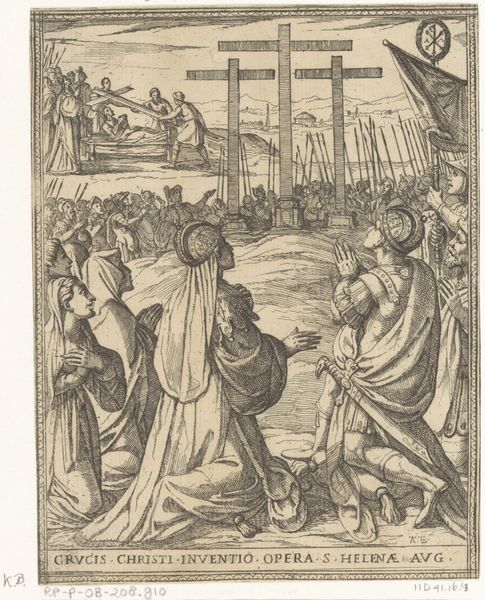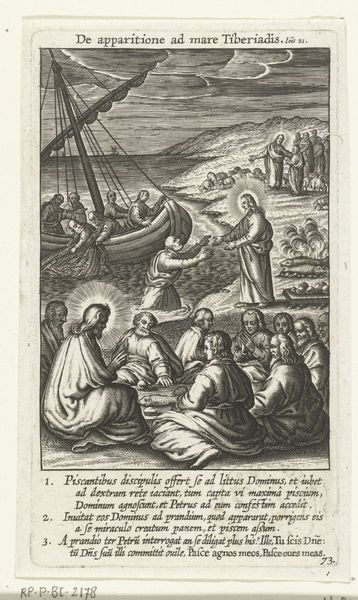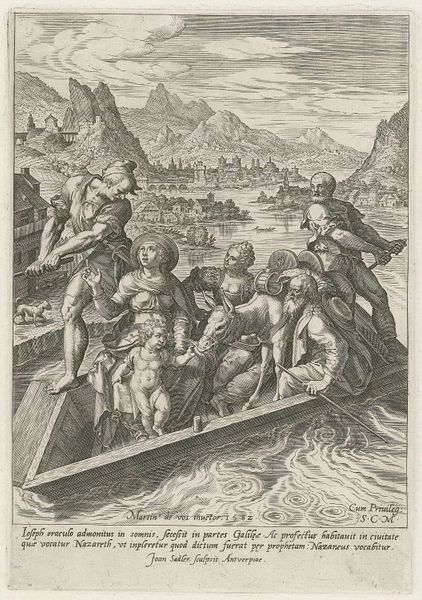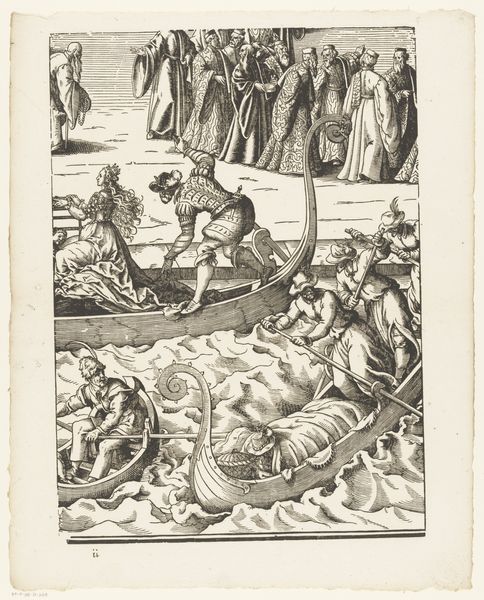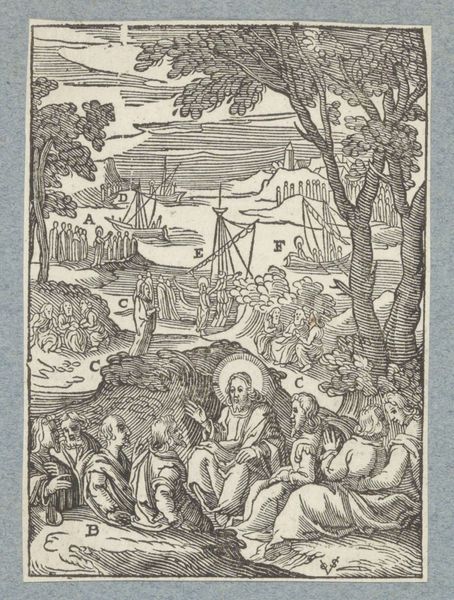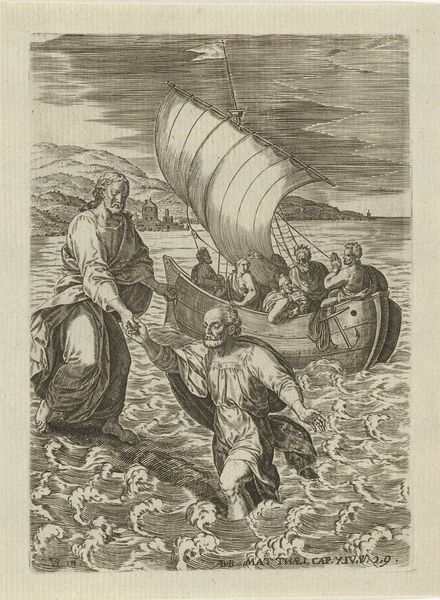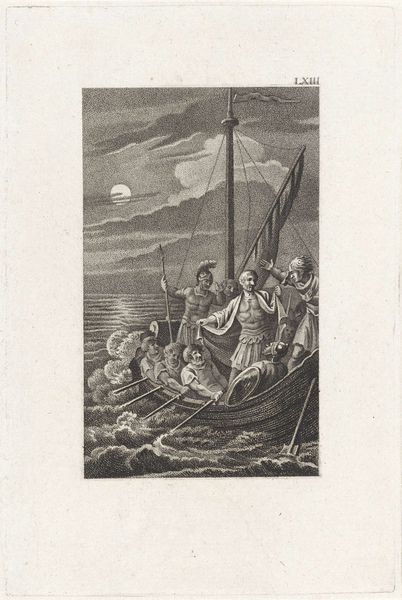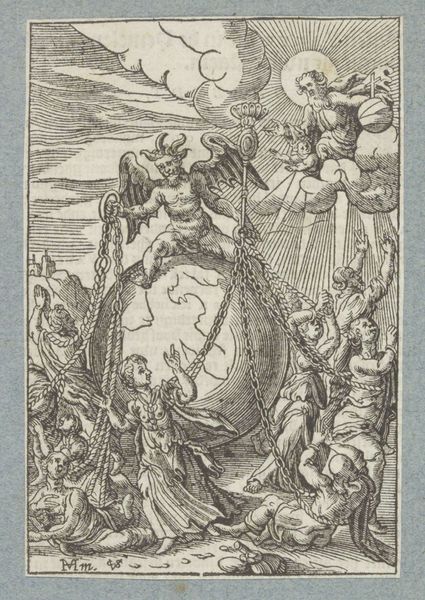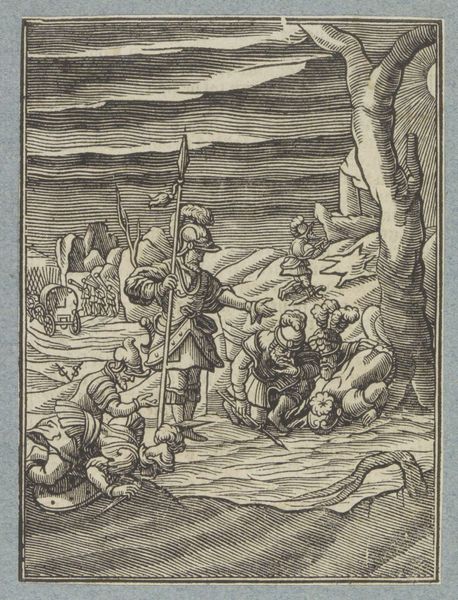
drawing, print, pen, engraving
#
drawing
#
narrative-art
#
baroque
# print
#
pen illustration
#
pen sketch
#
landscape
#
figuration
#
line
#
pen
#
history-painting
#
northern-renaissance
#
engraving
Dimensions: height 104 mm, width 74 mm
Copyright: Rijks Museum: Open Domain
Christoffel van Sichem II made this small woodcut, depicting Christ walking on water, sometime before 1658. As a print, its meaning is deeply entwined with its mode of production. The image is made by cutting away the negative space around the lines of the composition, leaving a raised surface to be inked and printed. This is a relief process, a relatively direct method of image production and one well suited to the dissemination of popular imagery. Looking closely, you can see the character of the wood itself – the grain subtly visible in the sky and sea. The sharp, decisive cuts create stark contrasts, lending a dramatic quality to the scene. The act of carving, removing material to reveal the image, is laborious. This reflects the social context of printmaking at the time, as a skilled but not especially elevated trade. Ultimately, this humble, handmade quality underscores the democratic nature of the print. It was a powerful medium for spreading ideas and stories far and wide, accessible to many.
Comments
No comments
Be the first to comment and join the conversation on the ultimate creative platform.
